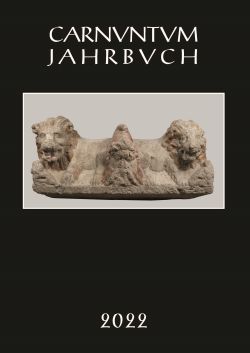
Carnuntum Jahrbuch 2022, pp. 43-54, 2023/12/14
Zeitschrift für Archäologie und Kulturgeschichte des Donauraumes
The lion crown from Carnuntum with extensive remains of original polychromy was recently investigated within the framework of the “PolychroMon” research project (Austrian Academy of Sciences). The monument, an architectural component that was used as a separately worked crowning element of a large-format funerary stele, belongs to a well-known type found especially in the Danube-Balkan region during the later 2nd and 3rd centuries. It shows a pair of antithetically placed lying lions, each holding a ram’s head under their right front paws. A head of a bearded man with a Phrygian cap is placed in the middle. The iconographic analysis suggests its identification as Iuppiter Sabazios, which would so far be a unique case among the known lion crowns. Investigations of the polychromy revealed the use of yellow and red ochre, green earth, and carbon black in lime binding, and permitted reconstruction of the painting technique in places. Moreover, the combination of different non-invasive investigation methods gives rise to the possible use of Egyptian blue.